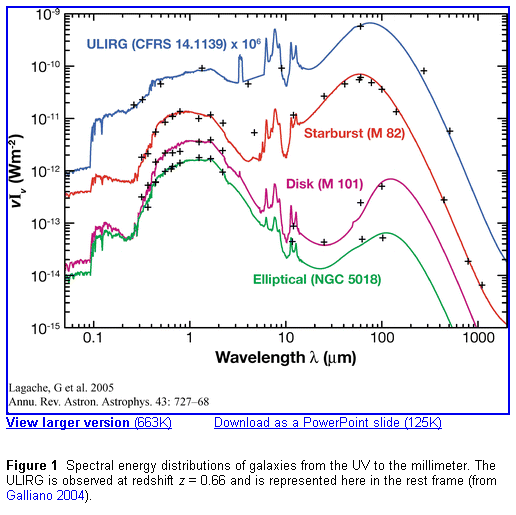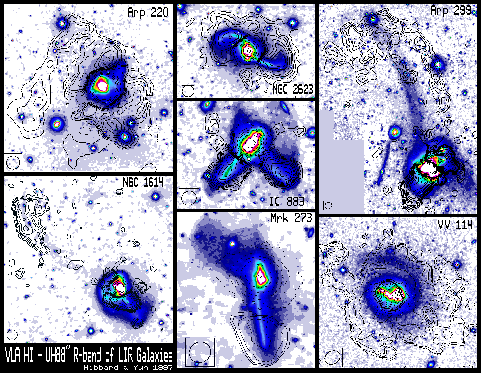
What do they look like? Often mergers of massive, gas-rich galaxies, with star formation rates > 100 Msun/yr:

(from Hibbard & Yun 1997)
If galaxy collisions and mergers are common at high redshift, as structure forms, these "LIRGs" may be the local analogues to high redshift starburst galaxies. They would not be detected as Lyman break galaxies, because they are so dusty the ultraviolet is blocked by the dust. We need to look in the redshifted far-infrared where they are brightest, ie in sub-millimeter wavelengths. This is observable from the ground!